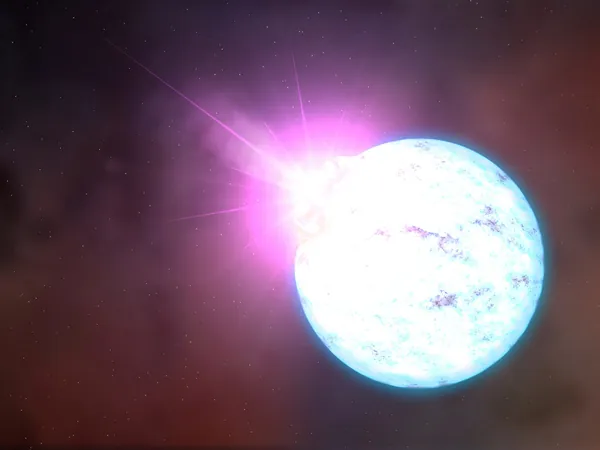
Have Scientists Cracked the Cosmic Code Behind Gold's Origins?
2025-05-05
Author: Ming
A Golden Riddle Unveiled
For centuries, the cosmic origins of heavy elements like gold have baffled scientists. But recent research may have finally shed light on this age-old mystery.
Magnetars: The Gold Makers?
A groundbreaking study suggests that intense explosions from powerful neutron stars known as magnetars could be responsible for the creation of gold in the universe.
Decoding the Discovery
Published in The Astrophysical Journal Letters on April 29, this study analyzed two decades worth of data from NASA and European Space Agency telescopes. The findings indicate that massive magnetar flares contribute to the abundance of heavy metals, including gold, in our galaxy.
"This is a fundamental question about the origin of complex matter in the universe," states Anirudh Patel, a Columbia University doctoral student and lead author of the study. "It's a tricky puzzle that we've yet to fully solve."
How Much Gold Are We Talking About?
The research estimates that magnetar flares could account for as much as 10% of the galaxy's heavy elements—those heavier than iron. This is a significant revelation that redefines our understanding of where gold in the universe comes from.
What Exactly Are Magnetars?
Magnetars are a unique type of neutron star characterized by their extreme magnetic fields. They are born from the remnants of massive stars that explode, leaving behind extraordinarily dense cores.
According to co-author Eric Burns, an astrophysicist at Louisiana State University, these cosmic powerhouses may have emerged shortly after the universe itself began, around 13.6 billion years ago.
Understanding the Gold-Making Process
In rare occurrences, magnetars release a burst of high-energy radiation during a phenomenon known as a "starquake." This can trigger a magnetar giant flare, unleashing gamma rays and releasing material into space. While the exact mechanisms behind this material release remain unclear, researchers speculate that these flares could forge gold through a rapid neutron-capturing process that converts lighter atomic nuclei into heavier ones.
A Shift in Cosmic Understanding
Previously, the formation of gold was primarily attributed to neutron star collisions or kilonovas. A historic neutron star collision observed in 2017 confirmed that such events could indeed produce heavy elements. However, this study's archival data suggests that the first gold may have been formed much earlier, long before these collisions.
What's Next for Gold Research?
NASA is set to launch the Compton Spectrometer and Imager (COSI) in 2027. This gamma-ray telescope will further investigate energetic phenomena like magnetar giant flares, with the potential to identify individual elements forged during these explosive events. This upcoming mission promises to deepen our understanding of how heavy elements, including gold, came into existence in the cosmos.

 Brasil (PT)
Brasil (PT)
 Canada (EN)
Canada (EN)
 Chile (ES)
Chile (ES)
 Česko (CS)
Česko (CS)
 대한민국 (KO)
대한민국 (KO)
 España (ES)
España (ES)
 France (FR)
France (FR)
 Hong Kong (EN)
Hong Kong (EN)
 Italia (IT)
Italia (IT)
 日本 (JA)
日本 (JA)
 Magyarország (HU)
Magyarország (HU)
 Norge (NO)
Norge (NO)
 Polska (PL)
Polska (PL)
 Schweiz (DE)
Schweiz (DE)
 Singapore (EN)
Singapore (EN)
 Sverige (SV)
Sverige (SV)
 Suomi (FI)
Suomi (FI)
 Türkiye (TR)
Türkiye (TR)
 الإمارات العربية المتحدة (AR)
الإمارات العربية المتحدة (AR)